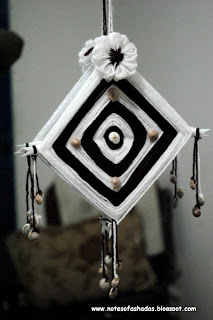http://www.boldsky.com/beauty/hair-care/2013/maintain-hair-hygiene-032717.html
Do you want a stylish hair? Then get a new hair style. Try straightening, curling or colouring you hair for a makeover. But if you want to have healthy hair, then you should give prime importance to hygiene. Sebum produced by sebaceous glands in the hair follicles are beneficial as it keeps the hair healthy. However, excess production or accumulation of sebum is not desirable as it cause hair loss.
We all worry about various hair problems, but with a habit of good hygiene, most of this can be solved. Healthy hair definitely has an important role in keeping your confidence level high. No matter how appealing you are, a bad odour from your hair is strong enough to make you feel embarrassed. Now stop worrying about your hair problems, and follow these simple steps to maintain a good hair hygiene.

Washing your hair: It is the first and foremost need to keep your hair and scalp clean. Washing your hair and massaging your scalp will resolve most of your hair complaints. But it is important to select a mild shampoo which is formulated for your hair type.
Use conditioners: Frequent drying, colouring, straightening, and usage of chemical products can affect your hair health. Hair conditioners are usually helpful to maintain proper hair hygiene, as they will form a light layer over the hair and keep it protected.
Clean your scalp: Massaging your hair with warm oil will help to clean your scalp. Massaging will help remove dandruff or dirt from the scalp. Oil can act as a conditioner and will protect your hair from getting rough and dry.
Remove excess oil: While applying oil is healthy for hair, keeping excess oil on hair without washing will affect the health of your hair. It will accelerate the accumulation of dirt on the scalp. Always remember to wash off the excess oil with a mild shampoo.
Clean your hair accessories and tools: Washing your comb is very important to maintain hair hygiene. Do not share your comb. Clean your hair accessories like hair clips or hair bands.
Do not use expired hair products: The composition of these can change over time which will eventually result in hair fall. To keep your hair and scalp hygienic and clean, use quality products only.
Treat dandruff: Dandruff occurs mainly due to poor hygiene of your hair, which can further cause hair fall. Take necessary measures to resolve dandruff and treat hair fall. You can try natural remedies and if it is not working, consult a doctor.
Wash off sweat: Washing your hair whenever sweaty is important to remove the dirt and dead skin of scalp which are accumulated due to sweat. Excessive sweating will cause bad odour as well. Keep hair clean and neat to maintain hygiene and reduce hair problems like hair fall and itching.
Not loose, not tight: Keeping hair loose will settle dirt and dust. Loosened hair is more prone to hair splitting. Tying hair too tight may cause excess sweating. So, do tie your hair too tight or loose.
During travel: Always keep a mini pack of oil, shampoo and conditioner with you if you are travelling for several days. Try to keep your hair oil free while travelling. Do not let sweat stay on scalp for a long time. Follow these tips to maintain hair hygiene.
Read more at: http://www.boldsky.com/beauty/hair-care/2013/maintain-hair-hygiene-032717.html
.
Do you want a stylish hair? Then get a new hair style. Try straightening, curling or colouring you hair for a makeover. But if you want to have healthy hair, then you should give prime importance to hygiene. Sebum produced by sebaceous glands in the hair follicles are beneficial as it keeps the hair healthy. However, excess production or accumulation of sebum is not desirable as it cause hair loss.
We all worry about various hair problems, but with a habit of good hygiene, most of this can be solved. Healthy hair definitely has an important role in keeping your confidence level high. No matter how appealing you are, a bad odour from your hair is strong enough to make you feel embarrassed. Now stop worrying about your hair problems, and follow these simple steps to maintain a good hair hygiene.

Washing your hair: It is the first and foremost need to keep your hair and scalp clean. Washing your hair and massaging your scalp will resolve most of your hair complaints. But it is important to select a mild shampoo which is formulated for your hair type.
Use conditioners: Frequent drying, colouring, straightening, and usage of chemical products can affect your hair health. Hair conditioners are usually helpful to maintain proper hair hygiene, as they will form a light layer over the hair and keep it protected.
Clean your scalp: Massaging your hair with warm oil will help to clean your scalp. Massaging will help remove dandruff or dirt from the scalp. Oil can act as a conditioner and will protect your hair from getting rough and dry.
Remove excess oil: While applying oil is healthy for hair, keeping excess oil on hair without washing will affect the health of your hair. It will accelerate the accumulation of dirt on the scalp. Always remember to wash off the excess oil with a mild shampoo.
Clean your hair accessories and tools: Washing your comb is very important to maintain hair hygiene. Do not share your comb. Clean your hair accessories like hair clips or hair bands.
Do not use expired hair products: The composition of these can change over time which will eventually result in hair fall. To keep your hair and scalp hygienic and clean, use quality products only.
Treat dandruff: Dandruff occurs mainly due to poor hygiene of your hair, which can further cause hair fall. Take necessary measures to resolve dandruff and treat hair fall. You can try natural remedies and if it is not working, consult a doctor.
Wash off sweat: Washing your hair whenever sweaty is important to remove the dirt and dead skin of scalp which are accumulated due to sweat. Excessive sweating will cause bad odour as well. Keep hair clean and neat to maintain hygiene and reduce hair problems like hair fall and itching.
Not loose, not tight: Keeping hair loose will settle dirt and dust. Loosened hair is more prone to hair splitting. Tying hair too tight may cause excess sweating. So, do tie your hair too tight or loose.
During travel: Always keep a mini pack of oil, shampoo and conditioner with you if you are travelling for several days. Try to keep your hair oil free while travelling. Do not let sweat stay on scalp for a long time. Follow these tips to maintain hair hygiene.
Read more at: http://www.boldsky.com/beauty/hair-care/2013/maintain-hair-hygiene-032717.html
.





.jpg)








.JPG)